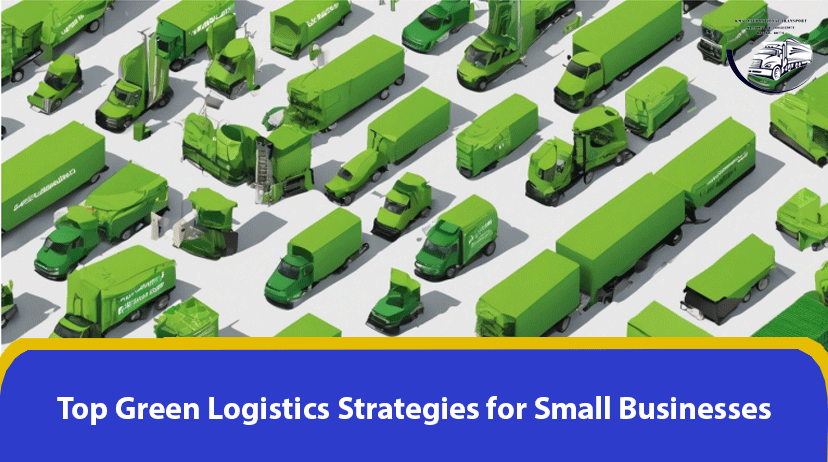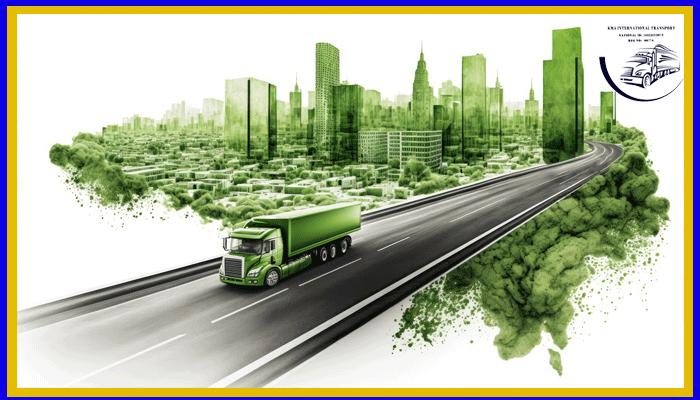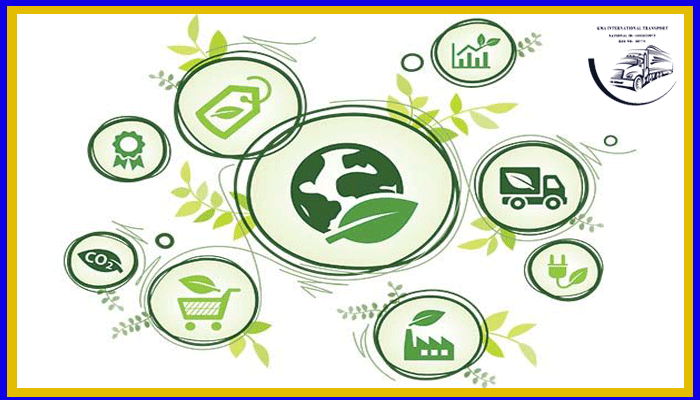Welcome to the keyhanmasirasia Site.

In today’s rapidly evolving market, small businesses are increasingly recognizing the importance of green logistics as a critical component of sustainable operations. This emphasis on eco-friendly practices is not just about reducing the carbon footprint but also about gaining a competitive edge through enhanced efficiency and reputation.
Green logistics encompasses a broad range of activities from reverse logistics, which focuses on the management of returns and recyclables, to green supply chain management, aimed at minimizing waste and optimizing resource use. By integrating these practices, small businesses can contribute significantly to environmental sustainability while also benefiting from cost reductions and improved customer satisfaction.
This article delves into the top green logistics strategies for small businesses, offering actionable insights into adopting energy-efficient vehicles, optimizing warehouse operations, and innovative packaging solutions. Furthermore, it explores the utilization of technology in implementing green line logistics and the importance of last-mile logistics in minimizing the overall impact on the environment.
Through a detailed examination of these strategies, small businesses can better understand how to integrate green supply chain management into their operations, ultimately leading to enhanced sustainability and success in the green market.
Green logistics, also known as sustainable logistics, plays a pivotal role in reducing the environmental impact of business operations. It involves the adoption of strategies such as using electric vehicles for last-mile deliveries and switching to sustainable packaging 1. By emphasizing alternative fuels and optimized transportation routes, these practices significantly decrease greenhouse gas emissions 1. Furthermore, implementing energy management systems within warehouses enhances energy efficiency across the logistics network, contributing to a substantial reduction in the overall carbon footprint
The shift towards green logistics is also driven by changing consumer expectations. A significant portion of online shoppers, over 70%, consider sustainability important, and nearly half are willing to endure longer delivery times if it benefits the environment 1. This growing consumer demand for sustainable practices compels businesses to adopt comprehensive green logistics strategies, not just

Small businesses looking to enhance their green logistics can significantly benefit from integrating electric vehicles (EVs) into their fleets. EVs, known for producing zero tailpipe emissions, play a crucial role in reducing greenhouse gas emissions and air pollution 3. This shift not only helps combat climate change but also improves air quality, especially in urban areas. making the adoption of EVs more financially viable for small businesses
In addition to choosing energy-efficient vehicles, small businesses can achieve further reductions in their carbon footprint through effective driver training programs.
Implementing driver training programs not only helps in conserving fuel but also enhances overall driver performance and safety 4. Moreover, the use of advanced telematics systems can aid in monitoring and improving driving behaviors by providing real-time feedback to drivers, thus promoting more fuel-efficient driving practices
Small businesses are increasingly turning to biodegradable and compostable packaging materials to minimize their environmental impact. These materials, including plant-based plastics, paperboard, and biodegradable films, are derived from renewable sources and are capable of breaking down naturally over time 7. Notably, packaging options such as recycled cardboard, cornstarch-based bioplastics, and plant-based fibers
The shift towards eco-friendly packaging is largely driven by consumer preferences. Studies indicate that 27% of consumers would refrain from purchasing from retailers whose packaging is not sustainable 7. This consumer behavior underscores the importance of adopting green packaging solutions that are recyclable, biodegradable, or sourced from sustainable origins 7. Additionally, minimalistic packaging designs that reduce waste are increasingly favored by eco-conscious customers, reflecting their commitment to environmental stewardship 7. Businesses that respond to these consumer preferences not only enhance their brand image but also contribute positively to environmental sustainability.
In the pursuit of green logistics, small businesses are leveraging technology such as route optimization algorithms. These sophisticated tools can analyze billions of possibilities to determine the most efficient routes, a capability that has become accessible to smaller enterprises only in the last decade 9. The primary benefits of route optimization include finding the fastest routes for multiple vehicles, efficient dispatch management with one-click dispatch to driver mobile apps, and enhanced customer management through real-time notifications about estimated times of arrival and delivery completions Additionally, the integration of real-time tracking and analytics aids in both driver and fleet management, optimizing daily operations
The adoption of electric vehicles (EVs) represents a significant stride towards sustainable logistics. EVs, which incur lower operating costs and require less maintenance, integrate seamlessly into cloud-connected supply chain networks 10. This integration allows businesses to utilize AI-powered technologies to analyze operational data and generate actionable insights for reducing fuel consumption and streamlining operations

Conclusion
Throughout this examination of green logistics strategies for small businesses, it becomes clear that sustainable practices offer a comprehensive range of benefits that extend far beyond mere environmental stewardship. By emphasizing energy-efficient vehicles, optimizing warehouse operations, innovating in packaging, and leveraging technology for smarter logistics, businesses can simultaneously address the pressing challenge of climate change while catering to the evolving expectations of a sustainability-minded consumer base.
These strategic initiatives not only contribute to a significant reduction in carbon footprint and waste generation but also enhance operational efficiency, reduce costs, and bolster the competitive edge of small businesses in the market.
Stay up to date with keyhan masir Asia!
Learn more about the trends and changes in the transport industry, on our website and our blog. Improve your business performance with reliable logistics and transport solutions. Together we are ready to help you meet your logistics needs with ease.
FAQs 😉